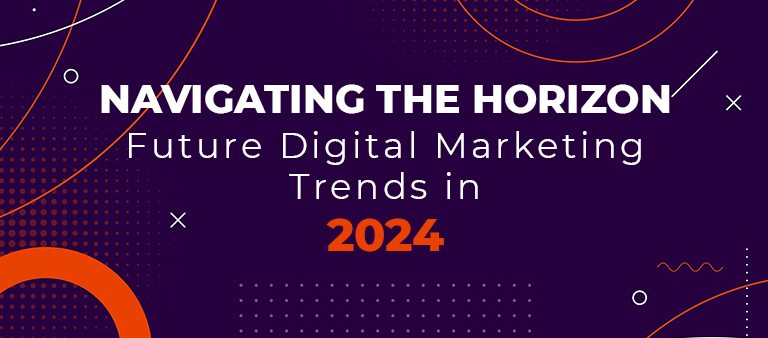
The digital marketing landscape is a dynamic realm, ever-evolving with the rapid advances in technology and shifts in consumer behavior. As we step into 2024, businesses and marketers must prepare for a new set of digital marketing trends that promise to shape the industry’s future. In this comprehensive overview, we’ll explore these trends, understand their potential impact on businesses, and provide insights on best practices for their implementation, all while weaving in notable success stories and case studies to illuminate the path forward.
1. AI-Powered Personalization:
Artificial Intelligence (AI) is set to dominate digital marketing in 2024. AI algorithms will refine consumer data into actionable insights, enabling marketers to create highly personalized campaigns. One standout example is Netflix, which uses AI to recommend content based on individual viewing history, contributing to its remarkable subscriber growth. Businesses should invest in AI-driven tools to enhance customer experiences and optimize marketing efforts.
2. Voice Search Optimization:
The rise of voice-activated devices like Amazon’s Alexa and Google Home has ushered in the era of voice search. By 2024, it’s estimated that half of all searches will be voice-based. Marketers must adapt their SEO strategies to cater to voice search queries. For example, Domino’s Pizza saw a 17% increase in online sales after implementing voice-ordering via Amazon Echo.
3. Interactive Content:
Consumers are increasingly seeking interactive content that engages and educates. Augmented reality (AR) and virtual reality (VR) are becoming mainstream, allowing businesses to offer immersive brand experiences. Brands like IKEA employ AR apps that enable customers to visualize furniture in their homes before purchasing, leading to better decision-making and customer satisfaction.
4. Sustainability and Social Responsibility:
In 2024, consumers will place an even greater emphasis on environmentally friendly and socially responsible brands. Digital marketing should reflect this commitment. Patagonia, known for its sustainable practices, ran a campaign highlighting its efforts to combat climate change, attracting environmentally conscious customers. Businesses should communicate their sustainability initiatives authentically.
5. Video Marketing Evolution:
Video marketing remains a powerhouse, but it’s evolving. Short-form videos on platforms like TikTok and Instagram Reels are gaining prominence. Consider the viral “Ocean Spray Challenge” where Fleetwood Mac’s “Dreams” played a central role, leading to a surge in both the song’s streams and Ocean Spray sales. Marketers must harness the power of bite-sized video content.
6. Micro-Moments:
Google popularized the concept of micro-moments, where consumers make quick decisions based on immediate needs. Marketers should create content that caters to these moments, providing instant value. Starbucks, for instance, has successfully leveraged micro-moments by offering mobile ordering, reducing wait times for busy commuters.
7. Blockchain for Transparency:
Blockchain technology ensures data transparency and security. Brands can use blockchain to verify product authenticity, track the supply chain, and build trust with customers. IBM’s Food Trust platform, powered by blockchain, allows customers to trace the journey of their food products, ensuring safety and quality.
8. Social Commerce Integration:
Social media platforms are increasingly incorporating e-commerce features. Instagram’s “Shop” feature and Facebook’s “Shops” are excellent examples. Marketers should integrate their e-commerce platforms with social media to provide seamless shopping experiences and capitalize on the extensive user base of these platforms.
9. Data Privacy and Compliance:
Stricter data protection laws are emerging worldwide. Businesses must prioritize data privacy and compliance with regulations like GDPR and CCPA. One standout example is Apple’s iOS 14 update, which required explicit user consent for tracking. Marketers need to adapt their strategies to operate within these constraints.
10. Humanization of Brands:
While automation and AI are essential, the human touch remains crucial. Brands should focus on creating authentic and empathetic interactions with their audience. A case in point is Wendy’s Twitter account, which gained popularity for its witty and humorous responses, personifying the brand.
Conclusion:
In 2024, the digital marketing landscape promises to be as exciting as it is challenging. Businesses that keep pace with these emerging trends will have a competitive edge. However, the real key to success lies in adapting these trends to suit your brand’s unique identity and customer base, staying genuine and customer-centric in an ever-evolving digital world. The future of digital marketing is here, and it’s more personal, interactive, and responsible than ever before. Embrace it to stand out in the ever-expanding digital marketplace.
